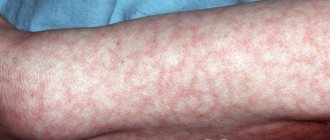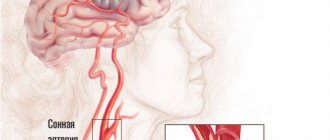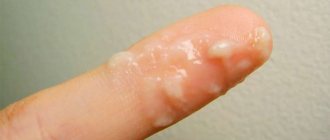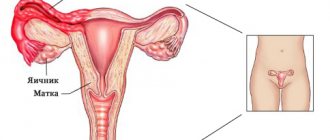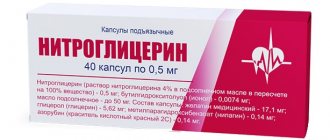Increased testosterone in women can be observed due to physiological and pathological reasons. This disorder affects health, in particular reproductive function. To avoid drug correction, it is necessary to change your diet and lifestyle.
Testosterone is a male sex hormone that is synthesized in the female body in small quantities by the ovaries and adrenal cortex.
This hormone is responsible for androgenization in girls. Androgenic activity of testosterone appears from the 13th week of intrauterine development. In addition to total testosterone, its free (not bound to proteins) fraction may have diagnostic value. The binding proteins for this hormone are albumin and globulin.
In the female body, testosterone controls the maturation of follicles, affects fertility, takes part in the development of muscle and bone tissue, regulates the activity of the sebaceous glands, and affects character and mood. It serves as a substrate for the formation of estrogens and also stimulates the preovulatory release of luteinizing hormone. Testosterone allows the diagnosis of androgen-secreting tumors of the ovaries and adrenal glands.
Normal values for total testosterone in women of reproductive age are in the range of 0.31–3.78 nmol/l.
The level of testosterone changes throughout the day, its maximum amount is contained in the blood in the morning, and by night it decreases significantly. The synthesis of testosterone in a woman’s body is influenced by age, health status, occupation, and the phase of the menstrual cycle. During menopause, testosterone production decreases.
Testosterone levels in girls and women:
| Age | Testosterone level, nmol/l |
| Girls under 1 year | 0–2,31 |
| Girls 1–6 years old | 0–1,22 |
| Girls 6–11 years old | 0,49–1,82 |
| Girls 11–15 years old | 0,84–4,46 |
| Girls 15–18 years old | 1,36–4,73 |
| Women over 18 years old | |
| Reproductive age | 0,31–3,78 |
| Pregnancy | up to 3-4-fold increase in non-pregnant values |
| When taking oral contraceptives | 0,45–2,88 |
Functions of testosterone in the female body
Normally, testosterone is produced not only in men, but also in women. Of course, in the male body the amount of this hormone will be much higher than in the fairer sex.
A woman’s body contains very little testosterone, and it is responsible for the following functions:
- formation of a figure according to the female type;
- muscle mass growth;
- regulation of libido;
- growth of the skeletal system during physical formation;
- normal functioning of the reproductive system;
- functional activity of the bone marrow.
Medical indicators of normal blood levels
You should know that hormonal levels constantly change throughout a month, a year, and a woman’s entire life. Significant fluctuations in levels are possible throughout the day and even within a day. As a rule, the maximum content is observed in the morning, and the minimum in the evening.
In medicine, 0.36-1.97 n mol/l is considered normal for the body of women under 50 and over 13 years of age.
But even within these age limits, the hormonal levels are not the same.
- Pregnant or nursing mothers have elevated testosterone almost all the time and the above norm can exceed 4 times in the third trimester.
- During menopause and menopause, testosterone decreases to 0.28-1.22 n mol/l.
- In the body of girls before adolescence, testosterone does not exceed 0.98 n mol/l.
- The minimum content is observed before reaching the age of 9 (0.06-1.7 pg/ml).
Accepted norms for women of childbearing age during the month:
- Limits – 0.45 – 3.75 nmol/l.
- On days 1-7 of the menstrual cycle – 0.45-3.17 pg/ml.
- During the period of ovulation – 0.46-2.48 pg/ml.
- End of cycle – 0.29-1.73 pg/ml.
In women, testosterone can be in a free state or bound to proteins. Hormones, when bound, are not metabolized and form a reserve.
Symptoms of high testosterone
With increased testosterone in women, the symptoms will be as follows:
- the appearance and increased growth of excess hair on the body, while hair can even appear on the face;
- increased skin dryness, peeling;
- the hair on the head becomes oilier and may fall out;
- the voice breaks and becomes rougher;
- the body acquires masculine features - the waist disappears, the shoulders become wider.
But these are only external signs indicating that the hormone testosterone in women is increased.
There are also internal symptoms of trouble, even more serious than external ones:
- sudden increase in libido and increase in physical endurance;
- cycle disruption up to the complete disappearance of menstruation;
- unreasonable rudeness, irritability, aggression.
Simultaneously with the appearance of these symptoms, dangerous conditions such as an ovarian tumor or Cushing's syndrome may develop in the body.
Hormone levels are increased
In men, an increased amount of androgen is manifested by hot temper, nervousness, craving for violence and excitement, and physical endurance.
They easily start relationships with women, often change partners, thanks to high sexual activity and the absence of problems with erection, as well as a pumped-up body without fat folds, which is characterized by increased hair growth on the chest, arms, and legs. It must be remembered that prolonged excess of hormone levels can cause testicular atrophy, leading to impotence and infertility, and can also be a symptom of prostate and testicular cancer. In women, an increase in testosterone levels is manifested by the appearance of characteristic male features: active hair growth, incl. on the face and chest, deepening of the voice, rapid increase in muscle mass, the emergence of a craving for physical activity and sexual satisfaction. In addition, behavior becomes aggressive, impulsive, and rude. The reasons for the increase in male hormone can be diabetes, problems with the hypothalamus, tumors of the adrenal glands and ovaries, as well as the presence of a cyst in the latter.
Causes
Factors influencing the increase in testosterone levels in women are as follows:
- ovarian tumor;
- adrenal hyperplasia or tumor;
- polycystic ovary syndrome;
- long-term use of hormone-containing drugs, for example, birth control pills;
- pregnancy.
Sometimes the cause of increased testosterone in women is poor nutrition. We are talking about alcoholic drinks, white cabbage, and nuts, which increase the production of this hormone in the body.
Testosterone levels in women (table by age)
Today, testosterone levels are known. The permissible amount of the hormone is set according to age - from 0.12 to 3.1 to 40 years, from 0.2 to 2.6 to 59 years, the norm of testosterone in women over 60 years of age is from 0.12 to 1.7. The analysis is carried out on the basis of blood donation from the patient’s vein. To obtain a reliable result, you must follow a number of rules on the eve of the test. This is primarily due to the cycle - it is recommended to check testosterone levels on days 3 to 5, as well as from days 8 to 10 of the menstrual cycle.
Table 1 - Testosterone levels in women by age. Photo: lab102.ru
Testosterone test
The day before donating blood, you must abstain from sexual intercourse, avoid physical activity, and diligently avoid stressful situations. In addition, you should not eat fatty foods or drink alcohol the day before the test. It is not recommended to eat or smoke for several hours. If these rules are followed, there is a high probability of submitting high-quality biomaterial and obtaining accurate analysis results. Both low and high indicators require a change in state. It is necessary to undergo treatment.
Increased testosterone levels in pregnant women
Many people are interested in why testosterone is increased in pregnant women, is this normal? Probably, gestation is the only period when increasing the level of this hormone is relatively safe for a woman. During pregnancy, the amount of progesterone can double or even triple. This is due to the fact that the placenta additionally synthesizes this hormone. If a woman is pregnant with a boy, then she will have more testosterone than one who is expecting a girl.
But this amount of testosterone is safe for a woman only during pregnancy and only in the second half. In the 1st trimester, elevated testosterone levels are not normal and can cause a missed abortion.
How to lower testosterone in a woman
A set of measures will help lower the level of the hormone in the blood; in addition to medical care, it includes:
- giving up bad habits, especially smoking
- increasing physical activity, playing sports or swimming
- eliminate lack of sleep and insufficient hours of sleep
- limit the consumption of medications (steroids, antibiotics and others)
Recommended Diet
To lower testosterone levels, it is recommended to eat foods with estrogenic activity. It is advisable to avoid nuts and seafood. Testosterone is lowered by foods such as milk, fresh vegetables and fruits, natural juices, honey, coffee and green tea. It is necessary to include complex carbohydrates in the diet - pasta, cereals and grains. It is also recommended to consume flaxseed oil, dates, sweet apples and apricots.
Traditional methods of lowering testosterone
There are traditional ways to lower testosterone levels in a woman’s blood without pills. These include mint tea, flaxseed infusion, and sage decoction. You can buy peony tincture at the pharmacy; it is considered an effective hormone-lowering agent.
Medicines
Drugs to lower testosterone levels in the body are prescribed only by a doctor. These may be hormonal drugs such as metformin, prednisone, dexamethasone and spironolactone. Oral contraceptives, Diane-35 or Cyproterone may be chosen as treatment.
Structural formula of testosterone. Photo: dovesipuoparlarediognicosa.blogspot.com
Treatment
If a woman has elevated testosterone, treatment will be carried out with the following medications:
- Digostin;
- Diethylstilbestrol;
- Cyproterone;
- Dexamethasone.
Also, glucose preparations - Siofor, Glucophage and Veroshpiron - are successfully used to reduce testosterone in women. The listed medications include spironolactone and metamorphine, which qualitatively suppress the synthesis of unnecessary testosterone.
In addition, the doctor may prescribe the patient to take oral contraceptives, such as Diane 35, Zhanine and Yarina. Read more about hormonal contraceptives →
It is contraindicated to practice self-medication for this condition, since, firstly, the hormonal system is too sensitive to interfere with it without the participation of a doctor, and, secondly, the risk of side effects is high. After completing the course of treatment, you will subsequently need to monitor the amount of testosterone in the body from time to time, since it is possible that it may increase.
Low testosterone in women
A reduced concentration of the hormone in a woman is the main symptom of aging. The reasons can be external and internal. The indicator may depend on age - after 40 years, testosterone levels decrease by almost 2 times.
Symptoms of low testosterone in women
- the appearance of a feeling of constant fatigue;
- body muscles weaken;
- decreased sex drive;
- weak vocal cords;
- hair loss throughout the body decreases, hair falls out and becomes thinner;
- weight decreases, problems with maintaining it, especially in the upper body;
- the skin becomes dry;
- Bad mood;
- sleep disorder and insomnia;
- cold intolerance;
- deterioration of the skin and nail plates.
When the level of testosterone in a woman’s body is low, the woman’s behavior also changes. She becomes apathetic, lethargic and tired. A bad mood predominates and can turn into depression or hysterics. Also, a small amount of testosterone affects the production of lubrication in the genitals, which affects the quality of sexual intercourse and manifests itself in the form of pain.
Causes of low testosterone in women
The most common causes of low testosterone levels in women:
- the onset of menopause, which causes hormonal changes. Many hormones are produced in smaller quantities, testosterone being one of them;
- impairment of renal activity, since the hormone is secreted precisely in the adrenal glands, its production is disrupted;
- removed ovaries;
- using certain medications, such as ketoconazole or opioids.
In addition, the hormone is little produced in the presence of genetic diseases (for example, Down syndrome).
Signs of low testosterone in a woman. Photo: formama.online
Possible diseases
The decrease in testosterone in the blood occurs gradually and can last for several years. Reduced hormone levels can lead to various serious diseases, such as:
- anemia
- diabetes
- cardiovascular diseases
- osteoporosis
- breast tumors
To establish the cause of low testosterone levels and the possible presence of pathology, a comprehensive diagnosis in the laboratory is necessary, and then consultation with an endocrinologist.
Nutrition
With a slight increase in testosterone, a special diet will help cope with the disease. There are products that lower testosterone in women in a short time.
These natural helpers are:
- vegetable oil;
- apples, cherries;
- sugar, salt;
- potato;
- soy products;
- cream and full fat milk;
- caffeine;
- rice, wheat;
- fried meat and vegetable dishes;
- honey.
Signs of Low Testosterone Levels
If testosterone is contained in small quantities in women, they experience muscle and psychological fatigue, and these phenomena begin to be chronic. The intimate sphere suffers especially: due to hormonal imbalance, a woman stops producing vaginal secretions: sex begins to bring unpleasant sensations. In addition, the following signs of low testosterone levels are observed:
- Decrease in the amount of hair throughout the body.
- Decreased muscle mass, constant feeling of weakness.
- Increase in fat layer under the skin.
- Dry skin.
- Lack of sexual desire.
- Bad mood turning into depression.
Consequences
Depending on the degree of increase in testosterone, changes that can occur in the female body are determined. If the hormone level is slightly increased, then the woman will only feel mood changes - bouts of irritability and increased physical activity, the growth of excess hair on the body where it should not be - above the lip, on the legs and arms.
If testosterone in women is much higher, the consequences will be much more serious: negative changes can affect the reproductive and reproductive systems, affect body weight, and cause diabetes.
If a woman's free or total testosterone is elevated, this affects every area of her life, including her appearance and physical condition. In this case, various health problems may arise. Therefore, every woman should remember that at the first signs of increased testosterone, she should consult a doctor and undergo appropriate treatment.
Author: Olga Rogozhkina, doctor, especially for Mama66.ru
What is testosterone responsible for in women?
Testosterone is responsible for important functions in the body of every woman. It helps regulate the production of sebaceous glands, maintain muscle mass, and perform the functions of the nervous system. It is responsible for the growth of the mammary glands, for the development of sexual characteristics, regulates the process of follicle maturation, and controls sexuality.
The hormone is also responsible for the growth of muscles and bones. The hormone testosterone affects a woman's sex drive, as well as her overall quality of life. It is believed that with an increase in the concentration of the hormone, sex life improves. A stable hormone level is important. The concentration of testosterone in a woman’s body may vary slightly depending on the time of day, the presence and phase of pregnancy, the menstrual cycle and age. A change in hormone concentration may indicate the presence of pathology or the development of a disease.
What is testosterone responsible for in women? Photo: fr-fr.facebook.com
In medicine, it is customary to distinguish two types of testosterone.
Total testosterone
The amount of hormone in the body as a whole, the sum of bound and free substances.
Free testosterone
Indicates the amount of non-protein-bound, active hormone. Its role is most significant in the formation of the skeleton and muscles and in the process of regulation.
For effective examination of patients, it is recommended to determine the level of both total and free testosterone.
Signs of low testosterone
When hormone production decreases, the following symptoms appear:
- constant fatigue;
- feeling of psychological overstrain;
- manifestation of headaches;
- cessation of vaginal secretion production (sex becomes impossible because the girl experiences pain during intercourse);
- constant being in a bad mood, depressive states;
- increase in fat layer.
We recommend you find out: How harmful is high testosterone to women’s health?
It is important to remember that it is unacceptable to start using hormone-containing drugs on your own without consulting a doctor.
Only a specialist, based on the results of a hormonal test, will be able to select the required treatment that will restore health.
Nutrition to increase potency and testosterone levels
Testosterone is a male sex hormone that affects not only libido. This hormone is also responsible for bone and muscle health, sperm production and hair growth. Testosterone production in the body can decrease with age, as well as from chronic diseases.
Hypogonadism, also called low testosterone, is often treated with medication to prevent future health problems. Along with your doctor's recommendations, you can follow a diet of testosterone-boosting foods. Two nutrients that are especially important in your diet are vitamin D and zinc.
High testosterone
Normally, a physiological increase in the concentration of the hormone in the blood occurs during puberty, pregnancy and during lactation. In other cases, excess androgen in women is a consequence of disorders in the hypothalamic-pituitary-ovarian-adrenal system.
In women, diffuse thinning of scalp hair is often associated with elevated testosterone levels
Detection of androgen levels above normal may indicate the presence of Itsenko-Cushing disease, polycystic ovary syndrome, hypothalamic pathologies, diabetes mellitus, androgen-producing tumors of the ovaries and adrenal glands. Possible causes of elevated testosterone, including in women over 30 years of age, include obesity, poor nutrition, and therapy with certain hormonal drugs.
Symptoms indicating that androgen levels are elevated include:
- hirsutism;
- hyperhidrosis;
- menstrual irregularities, miscarriage, infertility;
- arterial hypertension;
- striae;
- diffuse thinning of scalp hair;
- obesity;
- aggressive behavior, hot temper;
- increased libido;
- disorders of carbohydrate and electrolyte metabolism;
- hypertrophy of the labia and clitoris;
- atrophy of the mammary glands, increased muscle mass, development of a male-type figure;
- oily seborrhea, acne;
- decrease in voice timbre.
Causes and factors provoking violations
A doctor will be able to identify the only true cause of a girl’s hormonal imbalance.
That is why, if there are serious suspicions of a deficiency or excess of any hormones, you should consult a specialist.
We recommend you find out: Increased progesterone in women - what is dangerous?
He will give you a referral to take a hormonal test and explain how to properly prepare for this manipulation.
A woman’s total testosterone may increase as a result of the following reasons:
- The presence of diseases that imply dysfunction of the ovaries and uterus. Such pathologies include: the formation of malignant and benign tumors, fibroids, endometriosis.
- A woman's lack of testosterone can be hereditary. We cannot exclude the possibility of a similar deficiency in a daughter if her mother encountered this problem. In this case, it is necessary to pay special attention to monitoring hormone levels.
- Diseases associated with disturbances in the secretion of hormones by the adrenal glands. An increase in testosterone concentration in girls is often associated with disorders of the adrenal cortex.
You can provoke a decrease in the level of this substance through diet.
If a girl is into all kinds of fasting and low-fat diets, she will most likely encounter the problem of decreased testosterone.
Alcohol has an equally detrimental effect on the production of such substances.
This is due to the fact that alcoholic drinks inhibit the functioning of all endocrine glands.
During pregnancy
The level of testosterone in the blood is an important indicator for a woman. Especially if she plans to become a mother. Its decrease is a contraindication to conception. Therefore, it is necessary to first undergo a medical examination.
When the level of male hormone is low, a woman has problems conceiving. If she does manage to get pregnant, there is a high probability of complications occurring during this period. Quite often this becomes the reason for miscarriages and breakdowns. The doctor should prescribe medications that will help adjust the amount of testosterone.
A normal occurrence for a pregnant woman is an increase in this substance in the blood. It plays an important role in the process of placenta formation. There is no specific norm, but an increase is especially observed in the third trimester of pregnancy.
Reasons for the decline
The causes of low testosterone can be varied - internal (exogenous) and external (endogenous).
Exogenous:
- unfavorable heredity and congenital genetics;
- Down syndrome;
- renal failure;
- dysfunction of the pituitary gland, adrenal glands, hypothalamus;
- any types of tumors and neoplasms in the ovaries;
- endocrine disorders;
- age-related changes;
- ovariotomy (removal of one or both ovaries);
- adrenalectomy (removal of the adrenal glands).
Endogenous:
constant consumption of foods rich in zinc and magnesium;
- improper, poor quality nutrition;
- unjustified fasting, raw food diet, painful diets, etc.;
- abuse of foods high in carbohydrates;
- alcohol, drugs, smoking;
- medications, antifungals, oral contraceptives, anticonvulsants and antiulcers, immunosuppressants, barbiturates;
- overweight, obesity;
- lack of sun exposure, lack of vitamin D;
- medicinal plants – black cohosh, mint, licorice;
- stress;
- sleep disturbances;
- low physical and sexual activity;
- hormonal levels are also influenced by emotional and psychological factors - sexual arousal, depression;
- severely reduced testosterone occurs as a cause of the consequences of menopause and menopause in women;
- pay attention to the viscosity of the lubricant and its quantity if sexual relations cause you inconvenience and internal discomfort;
- Psychological stress leads to a decrease in testosterone, which has a bad effect on a woman’s mood and general condition.
The decline occurs gradually, it can last for years and is difficult to notice.
A reduced level of the hormone can provoke a number of disturbances in the functioning of the entire body and lead to severe forms of disease:
- heart and blood vessels;
- to anemia;
- to osteoporosis;
- to diabetes mellitus;
- tumors of the mammary glands and others.
An experienced endocrinologist will take into account possible risk factors and make a verdict - whether testosterone is low due to pathology or due to something else.
Sources
- Androgen deficiency in women(2017)
- Guay A, et al. (2003)
- Testosterone insufficiency in women: fact or fiction? (2016)
- Testosterone. (2016)
- What does testosterone do? (2017)
- Fred Hutchinson Cancer Research Center. (2012, August 22). Prostate cancer: Six things men should know about tomatoes, fish oil, vitamin supplements, testosterone, PSA Tests — and more [Press release].
- Lee, D. M., Tajar, A., Pye, S. R., Boonen, S., Vanderschueren, D., Bouillon, R., … EMAS study group. (2012, January). Association of hypogonadism with vitamin D status: the European Male Aging Study. European Journal of Endocrinology, 166(1), 77-85.
- Low Testosterone and Men's Health. (2010, March).
- Pilz, S., Frisch, S., Koertke, H., Kuhn, J., Dreier, J., Obermayer-Pietsch, B., … Zitterman, A. (2011, March). Effect of vitamin D supplementation on testosterone levels in men [Abstract]. Hormone and Metabolic Research, 43(3), 223-225.
- Wehr, E., Pilz, S., Boehm, B.O., März, W., {amp}amp; Obermayer-Pietsch, B. (2010, August). Association of vitamin D status with serum androgen levels in men [Abstract]. Clinical Endocrinology, 73(2), 243-248.
- Zinc. (2016, February 11).
- Potent health effects of pomegranate by Aida Zarfeshany, Sedigheh Asgary, and Shaghayegh Haghjoo Javanmard
- Antioxidant activity of pomegranate juice and its relationship with phenolic composition and processing by Gil MI, Tomás-Barberán FA, Hess-Pierce B, Holcroft DM, Kader AA.
- Oxidative stress in arteriogenic erectile dysfunction: prophylactic role of antioxidants by Azadzoi KM, Schulman RN, Aviram M, Siroky MB.
- The antioxidant potency of Punica granatum L. Fruit peel reduces cell proliferation and induces apoptosis on breast cancer by Dikmen M1, Ozturk N, Ozturk Y.
- Punicic acid is an omega-5 fatty acid capable of inhibiting breast cancer proliferation by Grossmann ME, Mizuno NK, Schuster T, Cleary MP
- Clinical investigation of the acute effects of pomegranate juice on blood pressure and endothelial function in hypertensive individuals by Asgary S, Keshvari M, Sahebkar A, Hashemi M, Rafieian-Kopaei M.
- Clinical evaluation of blood pressure lowering, endothelial function improving, hypolipidemic and anti-inflammatory effects of pomegranate juice in hypertensive subjects by Asgary S, Sahebkar A, Afshani MR, Keshvari M, Haghjooyjavanmard S, Rafieian-Kopaei M.
- Pomegranate juice consumption for 3 years by patients with carotid artery stenosis reduces common carotid intima-media thickness, blood pressure and LDL oxidation by Aviram M, Rosenblat M, Gaitini D, Nitecki S, Hoffman A, Dornfeld L, Volkova N, Presser D, Attias J, Liker H, Hayek T.
- Pomegranate juice consumption reduces oxidative stress, atherogenic modifications to LDL, and platelet aggregation: studies in humans and in atherosclerotic apolipoprotein E-deficient mice by Aviram M, Dornfeld L, Rosenblat M, Volkova N, Kaplan M, Coleman R, Hayek T, Presser D, Fuhrman B.
DETAILS: What to do if your ear is blocked
Diagnosis of deviations from the norm
At the stage of the initial examination, the woman’s hereditary history is studied in detail, the features of metabolic disorders are clarified, a genetic analysis is carried out, a study of hormonal status, as well as a gynecological examination to identify concomitant diseases of the pelvic organs. Using magnetic resonance imaging (MRI) of the hypothalamic-pituitary region and computed tomography or MRI of the adrenal glands, the presence of tumor processes is determined.
If the presence of ovarian tumor processes that affect hormone levels is suspected, additional studies are prescribed
A blood sample to determine testosterone concentration is taken from a vein. Non-pregnant patients are recommended to donate blood on the 6th or 7th day of the menstrual cycle; if prescribed by a doctor, the test can be performed at the beginning of the cycle - on the 2nd or 3rd day. For a reliable assessment of androgen status, it is recommended that the study can be repeated several times at certain intervals.
Daily fluctuations in the level of androgen in the blood are associated with the rhythm of its secretion. Higher concentrations are observed in the morning, and minimum values in the evening. On average, women produce 0.4 mg of testosterone per day.
The analysis is carried out in the morning, on an empty stomach. The last food must be taken 8 hours (at least) before the test; you are only allowed to drink water. A few days before blood sampling, it is important to exclude fatty foods from the diet, stop smoking and drinking alcohol, avoid psycho-emotional and physical stress, and also, in consultation with the doctor, stop taking medications, and postpone X-ray and ultrasound examinations.
How to increase testosterone levels?
The concentration of the hormone can be determined using a blood test. Rules:
- Blood for testing is taken only from a vein.
- The test is taken in the morning strictly on an empty stomach.
- The day before the test, you will need to eliminate stress, physical activity, and sex. Drinking alcohol is prohibited.
- An hour before the test you need to stop smoking.
Women donate blood for testosterone on the 3rd-5th day of the menstrual cycle, unless otherwise recommended by their attending physician.
In case of hormone deficiency, it is recommended:
- Diet.
- Physical activity.
- Lifestyle changes.
- Drug therapy.
Diet
Your daily diet includes foods rich in selenium and zinc. These minerals are thought to help increase testosterone concentrations. Fiber, fatty acids, vitamins A and E are also added.
Recommended Products:
- Fresh fruits in season (citrus fruits, persimmons, pears, apricots, melon, grapes).
- Fresh vegetables (tomatoes, sweet peppers, carrots).
- Seafood (including shrimp, oysters, red fish).
- Poultry meat.
- Cereals (barley, buckwheat, oatmeal are especially recommended).
- Nuts.
- Vegetable oils.
The consumption of smoked meats, too salty and fatty foods, and fried foods is limited. Priority is given to steamed food. You need to follow a diet not only to increase testosterone levels, but also to normalize hormonal levels in general. It is recommended to adhere to these nutritional principles for a long time (at least six months).
Physical activity
Exercising has a beneficial effect on progesterone levels and helps increase it. Intense physical activity with short rest between sets is recommended . Training should be regular - at least 3 times a week .
Recommended sports:
- Athletics.
- Race walking.
- Swimming.
- Body-building.
These activities activate blood flow to the internal organs, trigger increased testosterone production and help increase it .
Lifestyle
To normalize testosterone levels it is recommended:
- Sleep at least 8 hours a day.
- Stop smoking.
- Limit alcohol consumption.
- Avoid strict diets, including those involving fasting.
- Control your weight and prevent weight gain.
Drug treatment
When hormone levels are low in women, testosterone preparations are prescribed:
- Subcutaneous implants . They are inserted into the woman's body by a surgeon. A daily programmed dose of the hormone is given.
- Injections . Priority is given to depot forms, which can be administered once every few weeks.
- Products for topical use : gels, suppositories, creams. Daily use of the drug is expected.
The choice of a specific drug is determined by the doctor after examining the patient . The dosage and duration of use depend on the severity of the disease and are determined individually. Self-medication is unacceptable!
Folk remedies are also used to increase testosterone levels. Decoctions and infusions of herbs that affect hormonal levels (verbena, oleander, lovage, etc.) are used.
The use of folk recipes is permissible only as an auxiliary measure and not to the detriment of doctor’s prescriptions.

